Above: Basque wine country near Getaria, Spain. Image courtesy Caroline Zumbiehl on Unsplash.
Introduction to Spanish Basque Country Wines
Basque Country has long been a destination for the world’s foodies, with San Sebastian having more Michelin-starred restaurants per capita than any other city on Earth. Basque Country wines that accompany these world-class meals are gaining notoriety of their own. Now, the growing international popularity of txakoli – an effervescent wine from the Basque wine region – coupled with the already acclaimed Rioja Alavesa makes Basque Country the next hot destination for wine travelers.
While a wealth of information is available about the tasting notes of Rioja and txakoli, finding a comprehensive resource for travelers interested in experiential Basque Country tours and events can be challenging.
This guide is designed to provide you with the ABCs for exploring the captivating Basque Country, ensuring you don’t miss out on its unique experiences and hidden gems.
Immersive Wine Tasting Experiences
The same natural characteristics of the land that support the production of ingredients for the Basque Country’s internationally recognized cuisine—wild rivers, green pastures, chalky soils and strong sea breezes—make for exhilarating wine tasting experiences.
Whether you’re tasting Basque Country wine with wind in your hair on a patio overlooking the incredible Basque coastline, riding an e-bike along a Rioja winery route that overlays ancient trading routes or marveling at avant-garde architecture in a field of vines, you’re in for incredible immersive wine tasting experiences.
Key Basque Country Wine Regions and Their Experiences
The diverse Basque Country features four Denominaciones de Origen (DOs), including the renowned Rioja Alavesa, which has achieved the prestigious Denominación de Origen Calificada (DOCa).
The long-standing Rioja Alavesa region offers a rich blend of historic and modern experiences, from exploring the dolmens of Layaza to ducking into vintage wine caves to toasting the most ultramodern architecture in the wine world.
In contrast, the three Txakoli regions pronounced “chok-o-li“, are situated closer to the coast, where the warm breezes from the Cantabrian Sea lend to grape cultivation. Outdoor enthusiasts will find plenty of opportunities to immerse themselves in nature in these picturesque regions.
Next, let’s dive into the four Basque Country wine DOs:
Txakoli de Getaria DO
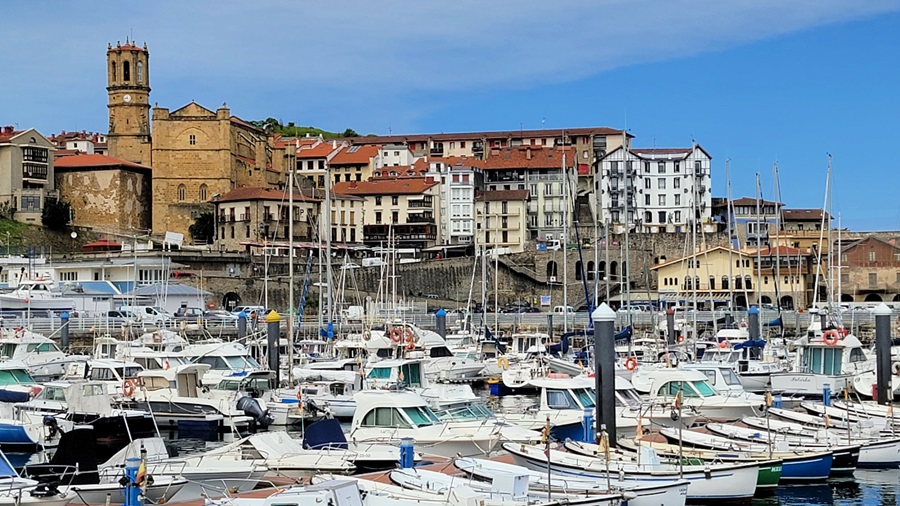
Getaria, a historic seafaring town, is sometimes called the birthplace of txakoli. After experiencing vineyard tours with coastal views, you’ll want to make time to wander this small fishing village.
Taste txakoli while you drink in the views above the dramatic Biscay coastline at Txomin Etxaniz winery. Walk through the vineyards to learn about the winemaking family, which has roots back to 1649 and was instrumental in obtaining the DO designation for the Getaria region.
After a tasting, spend the night at Ameztoi, a winery with four fully appointed guestrooms designed to let you absorb the beauty of the natural surroundings. Check guestroom availability.
Featured Experience: For those who have always wanted to walk the Camino de Santiago, now is your chance! The Camino del Norte goes right through the town of Getaria. Pick up the ancient pilgrimage route at the statue of explorer and hometown boy Juan Sebastián Elcano, who completed the first circumnavigation of the Earth on the Magellan expedition.
Pack a hat, water, lunch, and a bottle of wine for this out-and-back excursion. Follow the yellow arrows west into the hills through txakoli vineyards.
Txakoli de Bizkaia DO
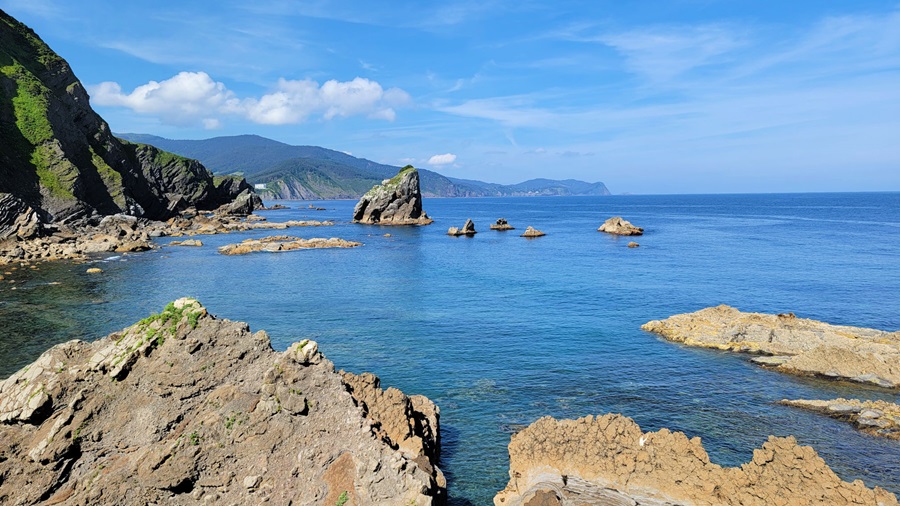
In this region, you’ll enjoy Basque Country wines and pintxos pairings. We recommend the sensory experiences at the following vineyards.
Located in the heart of the Urdaibai Biosphere Reserve near Gernika, Itsasmendi offers six txakoli tastings in different spaces accompanied by three pintxos made of seasonal products.
Drink in views of Urdaibai Biosphere Reserve as you taste two Txakolis, various pintxos, and Maumas DO Idiazabal cheese at Bodegas Berroja. During their Basque Country tours of the winery located in Barrio Berroja, Ajuria, you’ll hear interpretations of the bio reserve’s historical and cultural heritage.
Gorka Izagirre, in Larrabetzu, uses exclusively indigenous Hondarrabi Zuri and Hondarrabi Zerratia varieties as they work to recover the native grapes. They are recognized for their efforts to work harmoniously with the environment.
Featured Experience 1: Enjoy a VIP Culinary experience at Azurmendi Wine and Gastronomic Complex, of which Gorka Izagirre txakoli winery is a part. Azurmendi, named one of Travel+Leisure’s 14 best dining experiences in 2022, is known for its innovative Basque cuisine and strong commitment to sustainability. It’s worth noting that while Azurmendi is just outside the Bizkaia wine region, it is a highly acclaimed restaurant with three Michelin stars led by chef Eneko Atxa. Book as early as possible, as reservations are in high demand.
Featured Experience 2: Hop aboard a fishing vessel to learn about wine left at the bottom of the sea to age. Crusoe Treasure Underwater Winery, located about 20 km north of Bilbao, focuses on the unique aging process rather than grapes from a specific DO. The voyage with onboard wine tasting is one of the most unique wine tasting experiences in Basque Country.
RELATED: Learn About More Amazing Underwater Wine Tasting Opportunities
Txakoli de Álava DO
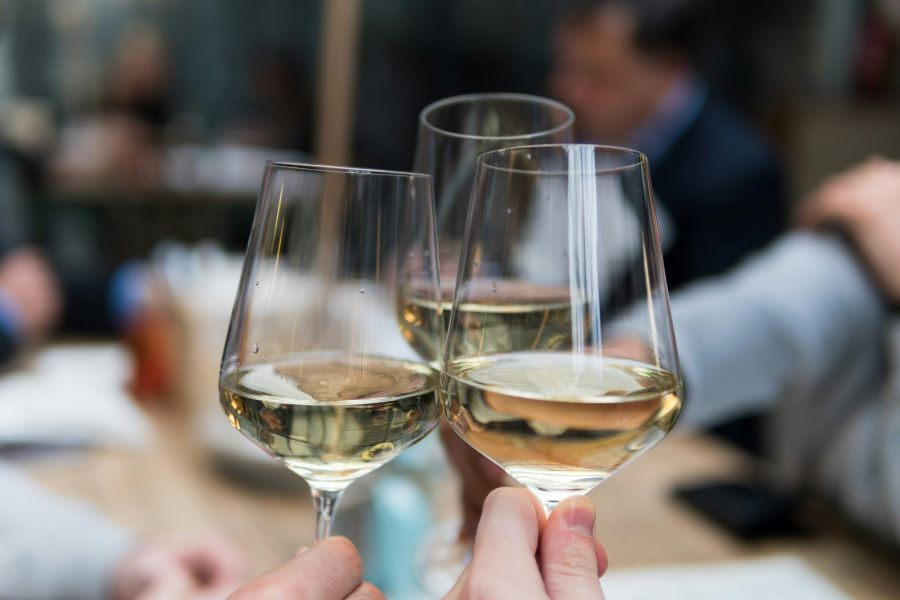
This smallish (148 acres/60 hectares of registered vineyards) Basque Country wine region is set on the slopes and valley of the Salvada mountains that separate the coast from southern Basque Country. Being the furthest inland of the three Txakoli DOs, it has a more continental climate, which can lead to more complex wines.
Although less than a dozen wineries make up Txakoli of Álava DO, also called the DO Arabako Txakolina, you’ll enjoy mountainous views and spot traditional white Basque farmsteads or caserios perched on the hills as you drive between them.
Artomaña Txakolina in Amurrio is the leading grape producer for Txakoli de Álava DO, marketing its wines worldwide under the Eukeni brand. You can tour this three-generation family winery and then choose from various tastings, including txakoli, beer, or cocktails made with their artisan vermouth, gin or wine.
At Beldui Txakolina in Gardea, you can enjoy a variety of immersive activities related to wine and nature. Walk up a nearby mountain to a historic stone ice house to fetch ice to help make a refreshing txakoli sorbet. Or taste bubbles under the stars at nighttime programs. During the grape harvest, cut and footpress the grapes, then afterward, enjoy bean stew in the winery’s dining room. Reserve in advance.
Featured Experience: At Orduña, a medieval city surrounded by mountains, find your best views of the Sierra Salvada from the walled fortifications. Tours begin at noon on Saturday from Foru Plaza, where the eleven streets that comprise the unique medieval town plan come together. Reserve your spot.
Rioja Alavesa DOCa
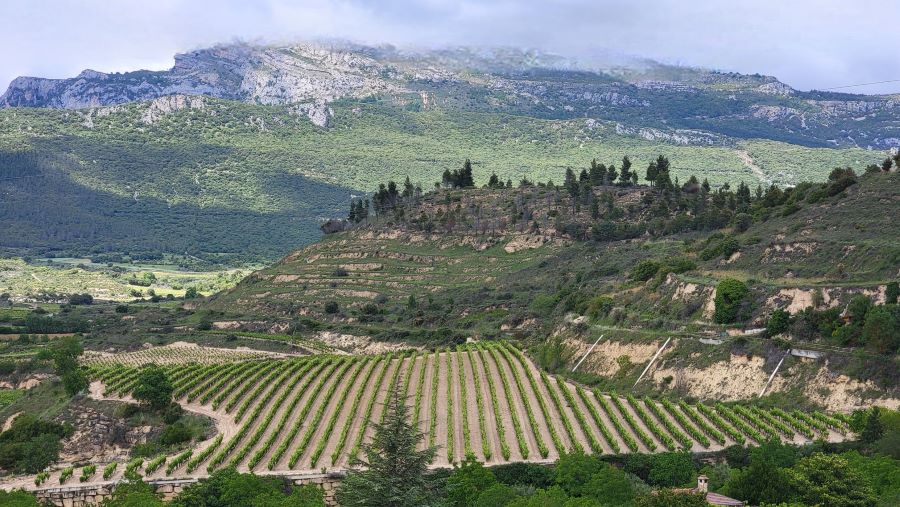
Rioja Alavesa is a subregion of the Rioja DOCa on the northern bank of the Ebro River that separates it from Rioja Alta. This region, probably the best known of the Basque wine areas, incorporates a variety of wine tasting experiences.
You’ll see some of the wine world’s leading architecture, designed by Frank O. Gehry and Santiago Calatrava, among others. This is also the region where you can taste Basque Country wines in medieval underground wine cellars called bodegas or caves.
Rioja Alavesa Wineries For Architecture Aficionados
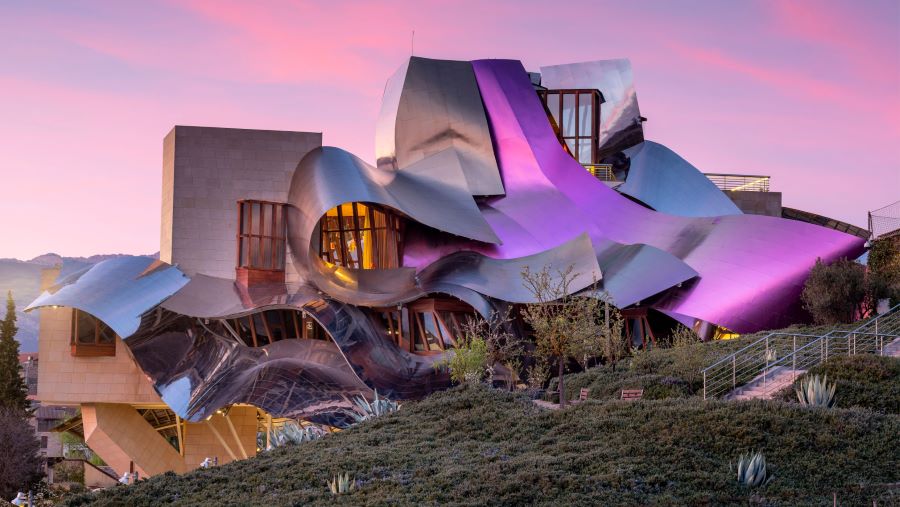
As you approach the Bodega Marqués de Riscal in Elciego, prepare to be awestruck. Shimmering ribbons of pink and purple titanium dance above a sea of greenery. The avant-garde architecture, a masterpiece by the renowned Frank O. Gehry, seems to both defy and embrace nature, with the lush landscaping gently enveloping the modernist structures. Gehry has undoubtedly left his stamp on the Rioja Alavesa DOCa but also promises to leave an indelible impression on your heart.
Bodegas Campillo is the first Rioja Alavesa winery designed to combine the beauty of the architectural space, nature and state-of-the-art wine production. The Bordeaux-style facility near Laguardia rises strikingly from the middle of 123 acres / 50 hectares of vineyards. Art lovers will enjoy the on-site art gallery.
The undulating aluminum roof of Bodegas Ysios mimics the Sierra de Cantabria peaks rising behind. A selfie in front of the building designed by award-winning architect Santiago Calatrava is a must. The winery is located north of Laguardia.
Designed and built by architect Iñaki Aspiazu to blend into the landscape, Baigorri is one of the most modern wineries you’ll visit. Our local sources tell us not to miss the outstanding lunch offered at their restaurant just west of Samaniego, which includes a tour of the winery, designed to use gravity rather than pumps.
Experience Basque Country Wines in a Traditional Bodega or Cave
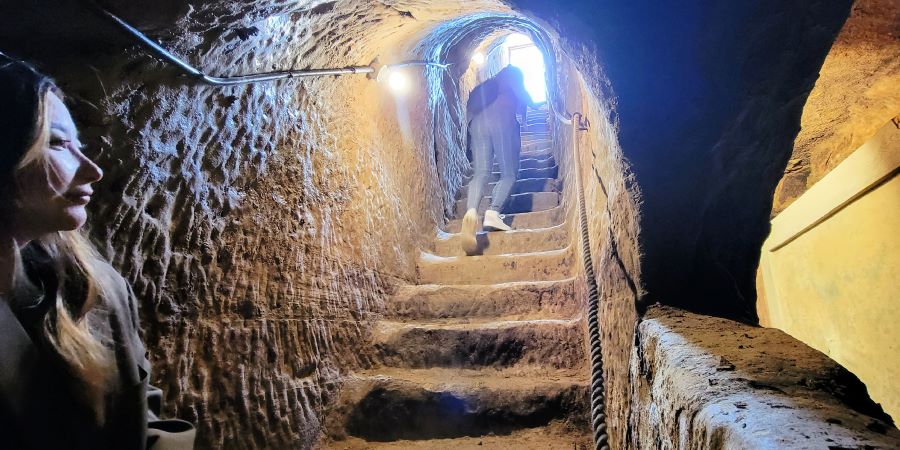
Bodegas Tierra makes its home in two of Labastida’s oldest stone buildings. Under these medieval structures is a maze of caves dating to 1200, an optimal environment for its high-quality Basque Country wines. Experience a tasting in the historic underground cellar, or opt to visit the vineyards, some over 100 years old.
Swirl, sniff and sip inside the 15th and 16th-century underground cellars at Bodegas Valdelana in Elceigo. You’ll journey through time as your tour starts in the winery’s ethnographic museum, revealing each group that has lived in La Rioja. Then, it’s onto the wine museum that documents how the Valdelana family worked the fields and made wine in the 1800s. The next stop is the 1583 chapel and underground vineyard. Aficionados will want to taste the Centvm Vitis, a signature wine that fuses edible gold with 140-year-old pre-phylloxera native vines.
Six fully-appointed guestrooms are available for overnight visits with room rates that include winery tours.
Although Eguren Ugarte in Páganos is not medieval, its beautiful tunnel system dug into the cave, restaurant, and hotel are true to a six-generation tradition of Basque Country winemaking. Experiences include lunch in the vineyard after a horse-drawn carriage ride, a Segway ride through the vineyards or a Basque Traditions package. Breakfast is included with an overnight stay in their signature hotel.
Featured Experience: Be surprised by El Calado Pirata’s variety of experiences for active wine travelers. Try your best in the first escape room in Rioja Alavesa, staged inside a medieval wine cave in Labastia. Or book a kayak on the Elbro River, the natural border between Rioja Alavesa and Rioja Alta.
Planning Your Basque Country Wine Tour
It’s easy to plan Basque Country tours and tastings with your favorite online providers, such as GetYourGuide.com, Devour Food Tours and Viator. You can also contact guide services directly to schedule private, personalized excursions. We recommend our friends Ernest of Ikusnahi Tours and José Manuel of Calado Pirata.
Transportation and Language Considerations
Flights into Bilbao, San Sebastian or Vitoria-Gastiez make it easy to get to Basque Country. You’ll find frequent train and bus service between these major centers.
Once you arrive in the Basque Country, renting a car is the easiest way to explore its wines. We found the highway systems excellent, with many divided freeways and tunnels. You can check car rental prices ahead of time.
The Basque Country in Spain has two official languages: Spanish and Basque (Euskara). Many towns have two names, one in Spanish and one in Basque, and they are sometimes hyphenated, such as Vitoria-Gasteiz.
Interestingly, the Basque language does not have the letter “C.” But it is helpful for English speakers to know that the Basque “X” is pronounced with the “Ch” sound.
Although you can choose wine experiences for English speakers, it’s a good idea to learn a few phrases, such as “please” and “thank you” in both Spanish and Euskara (Basque.)
Find more practical tips for getting to and around Basque Country here.
Additional Cultural and Historical Sites to Explore in Basque Country
In addition to the well-known Guggenheim Bilbao Museum, be sure to explore some of the lesser-known Basque cultural and historic sites, such as the open-air Salt Valley of Añana and the Santa Maria Cathedral in Vitoria.
Additional Resources on Basque Country Wine Experiences
Your favorite online travel agencies, such as GetYourGuide.com, Devour Food Tours and Viator, are top resources for finding immersive wine tasting experiences in the Basque Country region.
Our recommended reading list of Basque Country wines and regions includes:
- The wines of Northern Spain: From Galicia to the Pyrenees and Rioja to the Basque Country, an overview of regions and major producers for the wine adventurer.
- Basque Country: A Culinary Journey Through a Food Lover’s Paradise for an insight into food pairings and
- The Great Westward Walk for a Basque’s perspective of life, the joie de vivre and living life to the fullest.
Download helpful apps and brochures at the Euskadi Basque Country tourism department.

Thanks for recommend our winery. Best regards from Elciego!